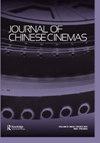Stereo revolution: Acoustic science and cinematic spaces in socialist China (1949–1966)
IF 0.4
3区 艺术学
0 FILM, RADIO, TELEVISION
引用次数: 0
Abstract
Abstract This article examines how the development of acoustic science changed the spatial configuration of movie theaters in China during the period between 1949 and 1966. The application of new acoustic technology not only caused a dramatic restructuring of movie theaters from the building’s material composition to the physical shapes of its walls and ceiling but also made crucial impacts on the conception of spectatorship and the discourse of cinematic realism. Taking the renovation project of Capital Theatre as an example, I show how the new cinematic space produced an immobile and individualized mode of spectatorship through the technological redistribution and management of individual bodies. Moreover, the growing technological capacity enabled technicians and recordists to imagine a different notion of cinematic realism, one that defined the verisimilitude of sonic ‘reality’ not in terms of its proximity to the empirical sound, but as the techno-perceptual effects within the sensory space of the movie theater. Drawing on sources from industry journal articles, construction reports, and academic papers by recordists, engineers, architects, acoustic technicians, etc., this article attempts to raise new problematics on the level of media infrastructure of socialist film and to promote meaningful dialogues with aesthetic, artistic and ideological issues.立体声革命:社会主义中国的声学科学与电影空间(1949-1966)
摘要本文考察了1949 - 1966年间声学科学的发展对中国电影院空间格局的影响。新的声学技术的应用不仅引起了电影院从建筑材料组成到墙壁和天花板的物理形状的戏剧性重组,而且对观众的概念和电影现实主义的话语产生了至关重要的影响。我以首都剧场改造项目为例,展示了新的电影空间如何通过对个体身体的技术再分配和管理,产生一种不动的、个性化的观看模式。此外,不断增长的技术能力使技术人员和录音师能够想象出一种不同的电影现实主义概念,这种概念定义了声音“现实”的真实性,而不是它与经验声音的接近程度,而是在电影院的感官空间内的技术感知效果。本文以行业期刊文章、施工报告、录音师、工程师、建筑师、声学技师等学者的学术论文为资料来源,试图在社会主义电影的媒介基础设施层面提出新的问题,并促进与美学、艺术和意识形态问题的有意义的对话。
本文章由计算机程序翻译,如有差异,请以英文原文为准。
求助全文
约1分钟内获得全文
求助全文

 求助内容:
求助内容: 应助结果提醒方式:
应助结果提醒方式:


